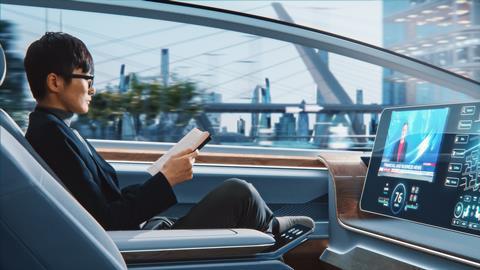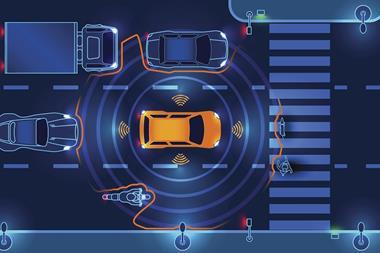Sponsored content: Rafał Durasiewicz, co-founder of digital transformation business Acini, discusses the future of autonomous vehicles and the role of insurance
A report by market research firm Ipsos - published in spring 2018 - found that Americans spend 52 minutes a day driving. No wonder autonomous cars sound so attractive.
Autonomous driving is not a futuristic solution, however.

In December 2020, for example, Waymo became the first service provider to offer driverless taxi rides to the public in certain parts of Phoenix, Arizona. Then, in March 2021, car manufacturer Honda was the first to sell a legally approved level three autonomous car.
But, there are aspects to consider if we hope to one day enjoy fully driverless cars – this includes technology, regulation and the human factor.
In my opinion, we can look at these elements as obstacles to 100% autonomous driving, but they also summarise the necessary steps required to guarantee safety for passengers and pedestrians.
Technology may well be the easiest step towards fully autonomous cars. In my 15 years of experience in insurance focused IT, I have learned that tech will do what you tell it to do – as long as you provide a carefully designed digital solution.
I predict some added road safety features will hit tomorrow’s vehicles. This includes predictive analysis algorithms that can inform cars’ behaviour – for example, it won’t be able to go on the road if there is heavy snow forecast, unless it has winter tyres.

Navigational decisions will also be quicker and more accurate if vehicles share data on traffic jams and accidents - with the caveat that every software has bugs.
Regulation is the second aspect to consider. That human life should always have priority over property or animal life sounds like a solid rule, but how do autonomous vehicles decide which human life is more important when there are just seconds to make the call?
The human factor, meanwhile, covers all non-automated objects - such as people, animals and other things on the road. There is no manual for human behaviour, which makes this the most complicated challenge to overcome as well as the most vital influencer of overall safety when it comes to autonomous cars.
Insurance is already using predictive analysis tools to anticipate unforeseeable accidents, so this will be the way to shape driverless insurance products, in my view.
What does the rise in autonomous vehicles mean for the insurance industry?
The greatest hurdle will be ascribing responsibility to particular levels of autonomy. As a consumer, I would want full responsibility for any incidents on the insurer and car manufacturer. But as an insurance expert I am more realistic.
I can easily see scenarios where insurance policies will be constructed to include many disclaimers, placing some liabilities on consumers. In other words, I probably won’t be able to enjoy an episode of my favourite Netflix show while driving for a while.

Hosted by comedian and actor Tom Allen, 34 Gold, 23 Silver and 22 Bronze awards were handed out across an amazing 34 categories recognising brilliance and innovation right across the breadth of UK general insurance.




















































